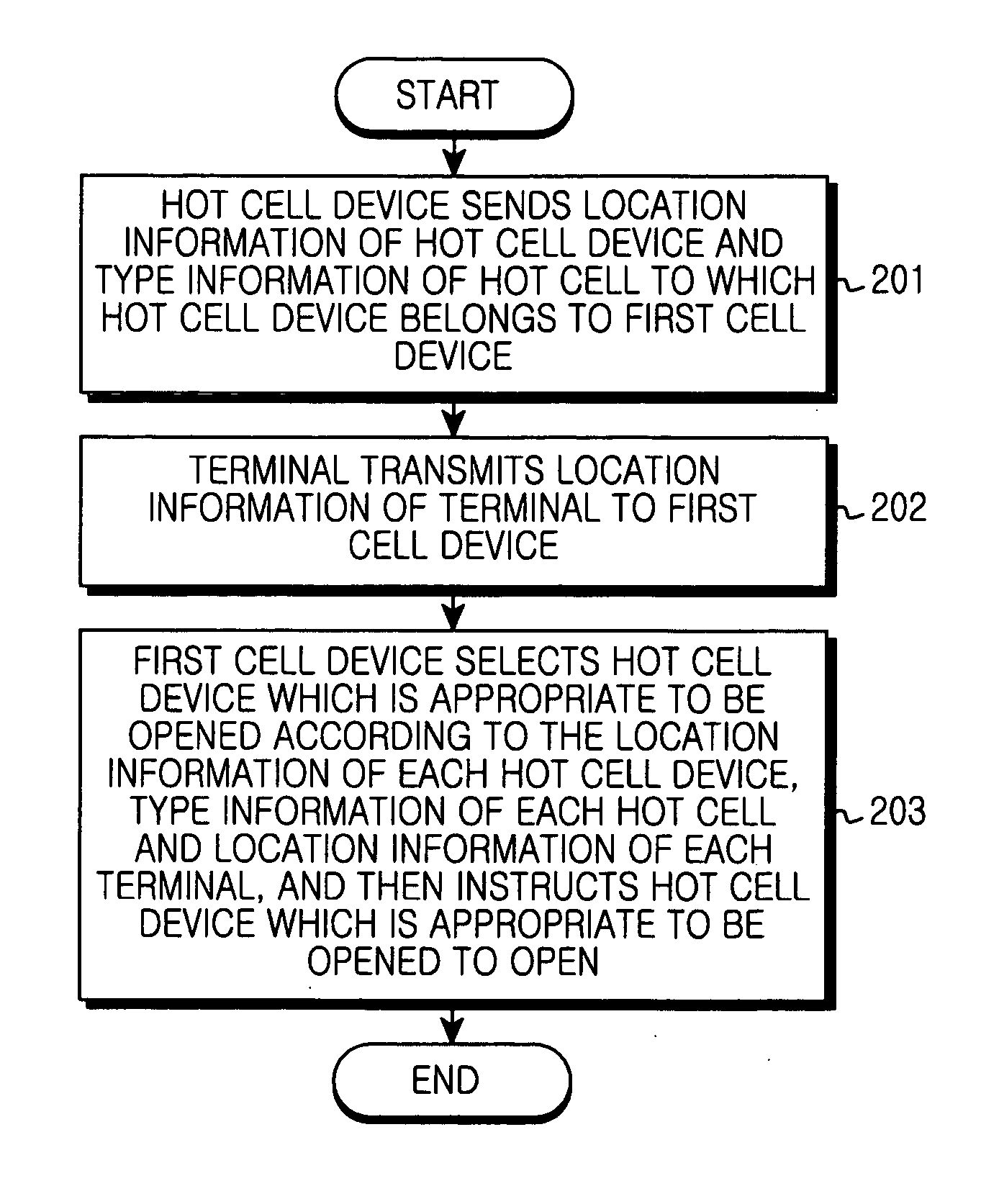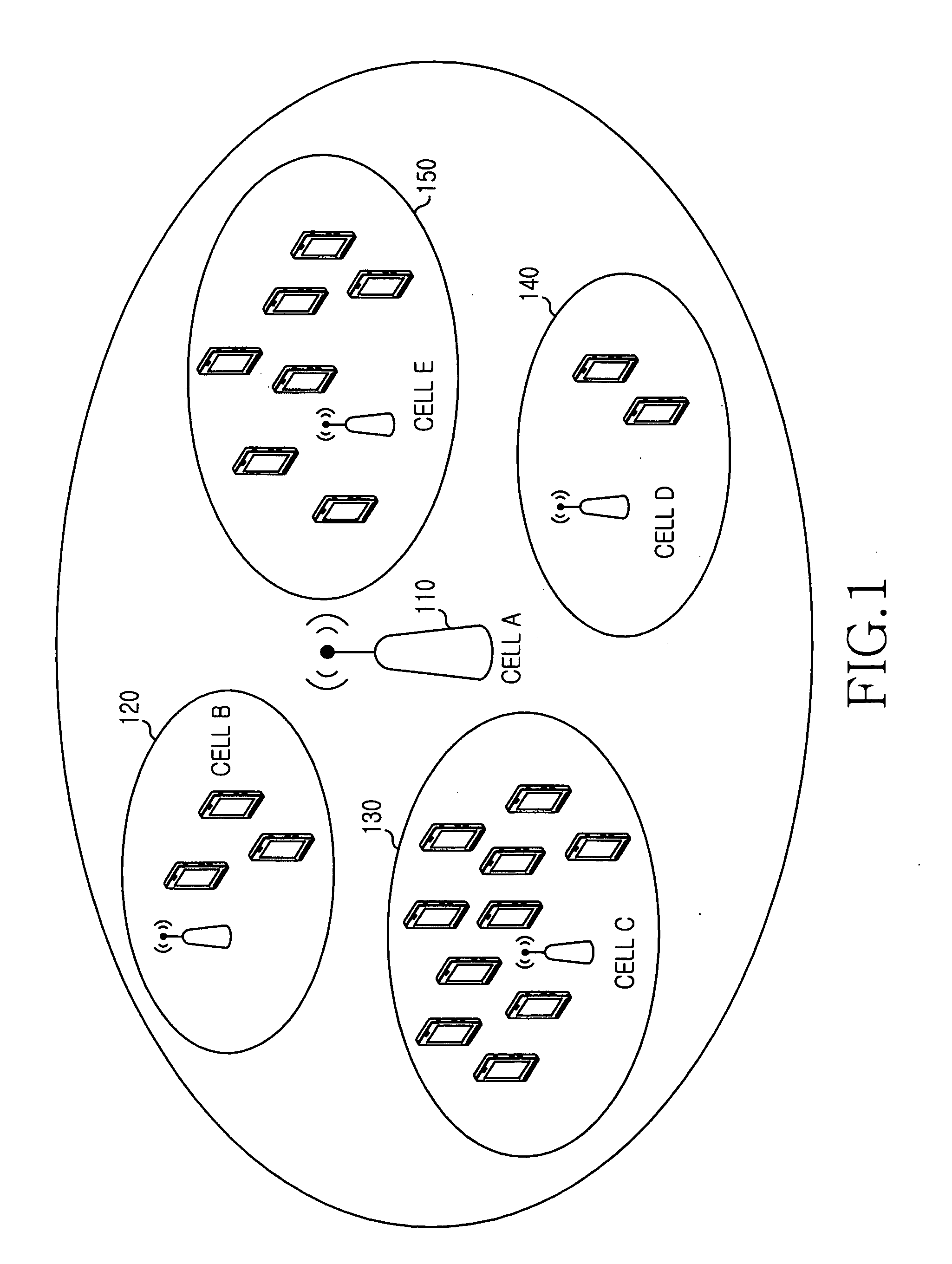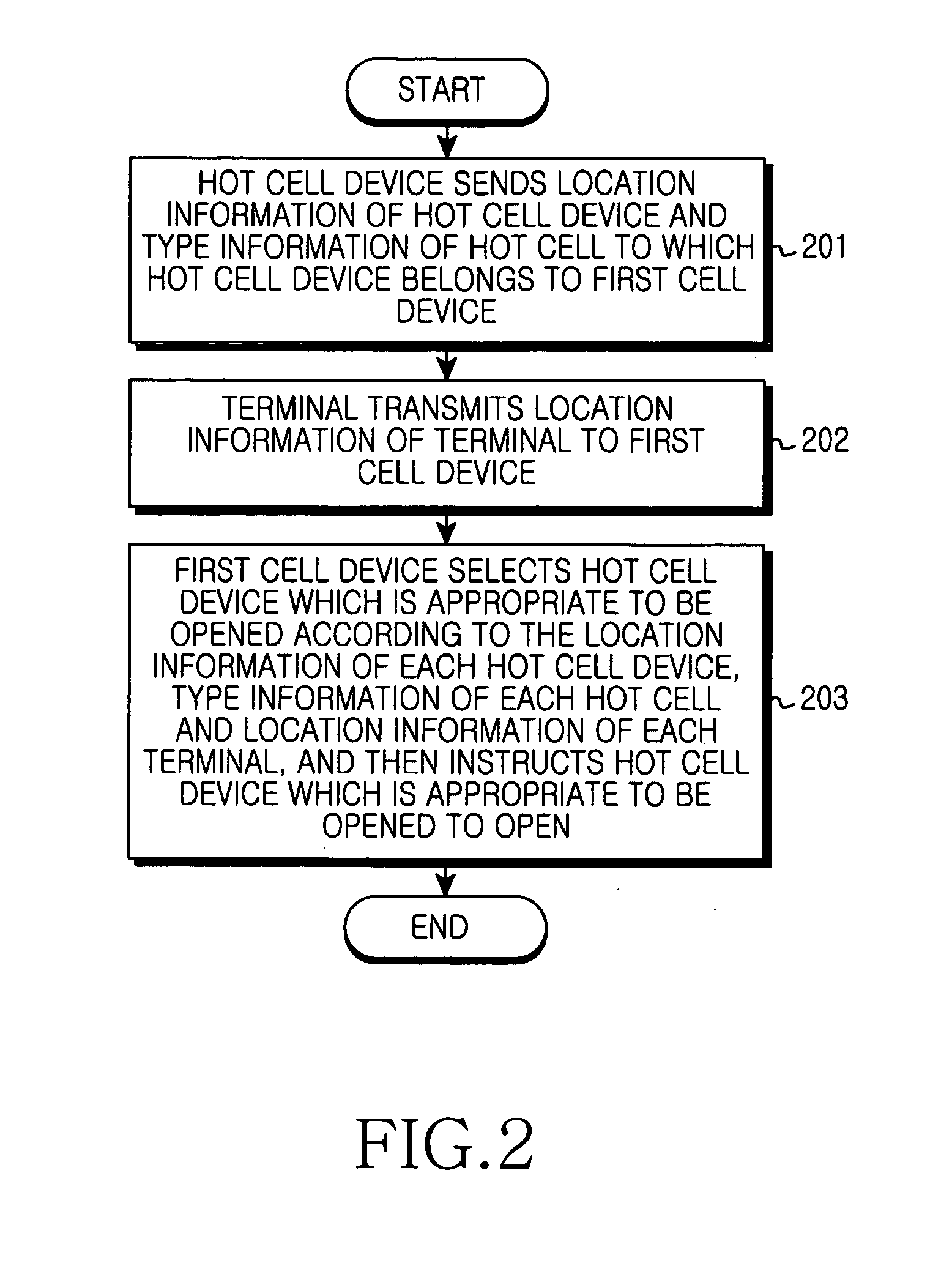Apparatus and method for managing hot cell devices
a technology of hot cell devices and apparatus, applied in the field of communication technologies, can solve the problems of energy waste, high energy consumption, and high interference and iot, and achieve the effect of saving energy
- Summary
- Abstract
- Description
- Claims
- Application Information
AI Technical Summary
Benefits of technology
Problems solved by technology
Method used
Image
Examples
first embodiment
[0044]A first embodiment will be described.
[0045]The embodiment applies to the system as shown in FIG. 1. In the system, cell A 110 is a basic coverage cell, and provides basic radio coverage for a certain area; cell B 120, cell C 130, cell D 140 and cell E 150 are hot cells in the signal coverage of cell A 110, and are cells deployed for further enhancing system capacity. Each hot cell can be closed when the user capacity is smaller, and be opened when the user capacity is larger. Cell A can adopt conventional radio interface technologies, such as Wideband Code Division Multiple Access (WCDMA) and GSM, or cell A 110 can also adopt LTE access system or other future access system. The hot cell can be LTE access system, or other access system.
[0046]When a hot cell device is closed, the hot cell device notifies a basic coverage cell device of location information of the hot cell device and type information of the hot cell. Alternatively, the hot cell device can notify the basic coverag...
second embodiment
[0059]A second embodiment will be described.
[0060]The embodiment applies to the system as shown in FIG. 1. In the embodiment, the hot cell notifies the location information of each hot cell device and type information of the hot cell when X2 interface is established. The embodiment will be described hereinafter in detail with reference to the accompanying drawing.
[0061]FIG. 4 illustrates a method for managing hot cell devices in accordance with the second embodiment of the present invention. The method includes the following processes.
[0062]In step 401, a hot cell device transmits an X2 establishment request message to the basic coverage cell device. The X2 establishment request message includes a unique identifier of the hot cell. The X2 establishment request message also includes geographical location of the hot cell device. The geographical location can be information of longitude or latitude. The X2 establishment request message also includes cell type of the hot cell, and the c...
third embodiment
[0075]A third embodiment will be described.
[0076]The embodiment applies to the system as shown in FIG. 1, and the embodiment will be described hereinafter in detail with reference to the accompanying drawing.
[0077]FIG. 5 illustrates a method for managing hot cell devices in accordance with the third embodiment of the present invention. The method includes the following processes.
[0078]Referring to FIG. 5, in step 501, capacity of a hot cell is in an idle state for a period of time, in order to save electricity, a device of the hot cell (also referred to as a hot cell device) closes transmitting function of air interface, and transmit a cell closing message to the basic coverage cell device, to notify the basic coverage cell device of close state of the hot cell. The cell closing message contains a unique identifier of the hot cell to be closed. The cell closing message also contains geographical location of the hot cell device. The geographical location can be information of longitu...
PUM
 Login to View More
Login to View More Abstract
Description
Claims
Application Information
 Login to View More
Login to View More - R&D
- Intellectual Property
- Life Sciences
- Materials
- Tech Scout
- Unparalleled Data Quality
- Higher Quality Content
- 60% Fewer Hallucinations
Browse by: Latest US Patents, China's latest patents, Technical Efficacy Thesaurus, Application Domain, Technology Topic, Popular Technical Reports.
© 2025 PatSnap. All rights reserved.Legal|Privacy policy|Modern Slavery Act Transparency Statement|Sitemap|About US| Contact US: help@patsnap.com



